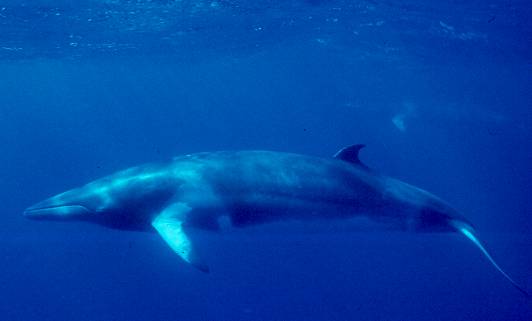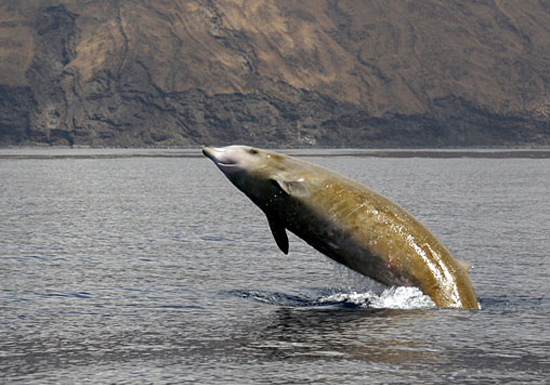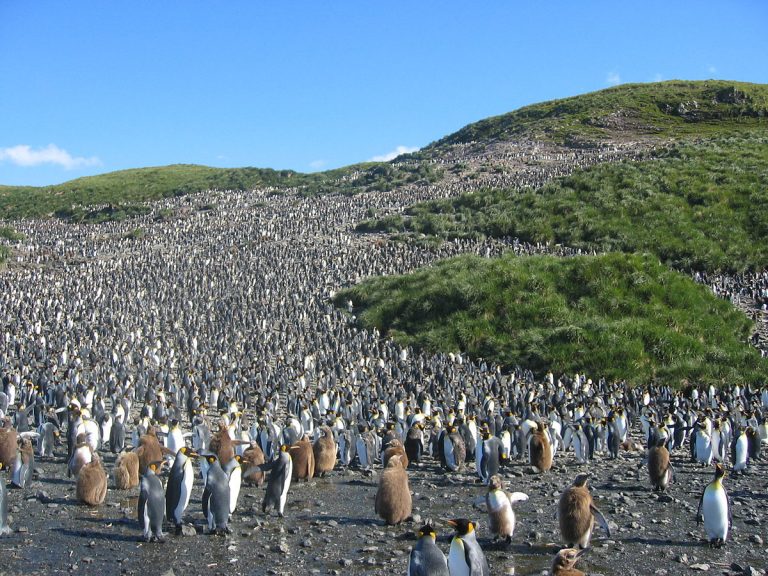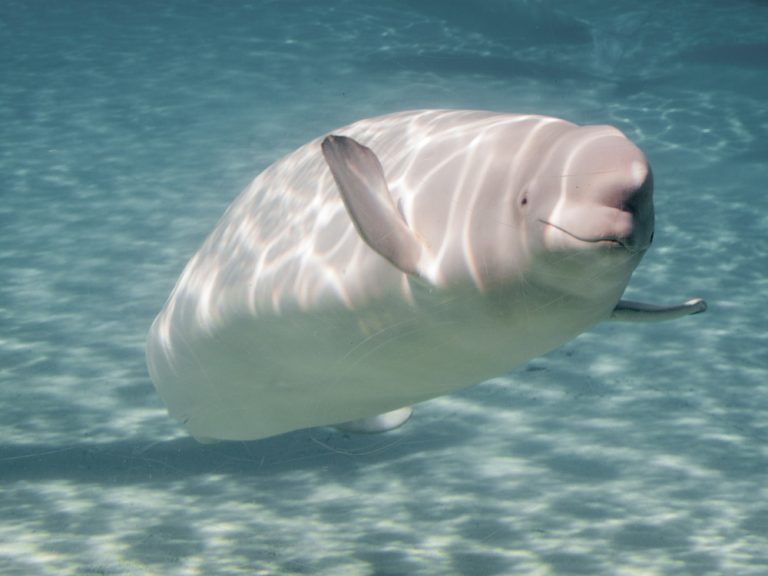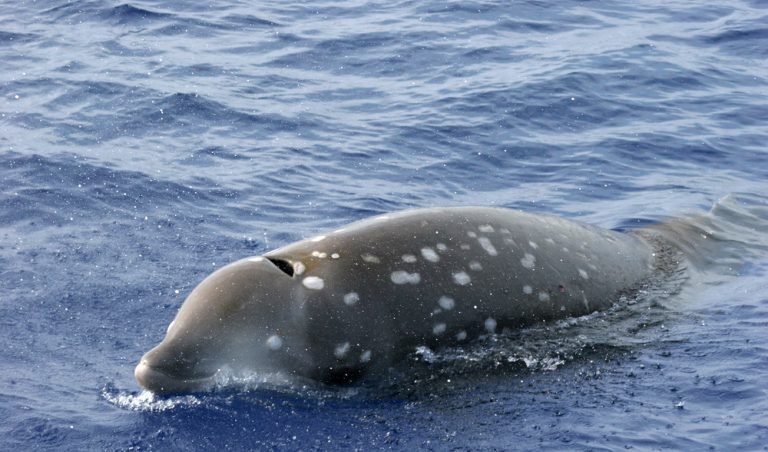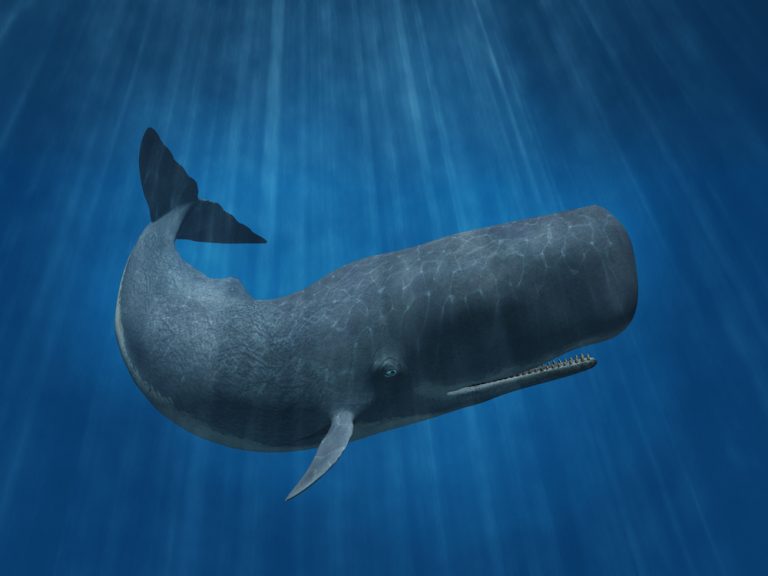Species Profile: The Gray Whale
The Gray Whale resisted capture so much that whalers named it “Devilfish.”
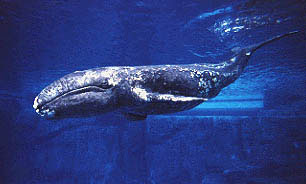
The Gray Whale is a medium-sized baleen whale and the only surviving member of its genus and family. This species is a migratory animal that travels annually between its feeding and breeding grounds.
These whales have a hump and a ridge of sharp bumps running down their backs rather than a dorsal fin. They also prefer to stay close to shore – feeding in shallow waters.
The common name, Gray Whale, comes from the contrasting gray patches and white mottling on its dark colored skin. The white patches are the result of barnacles and lice that have attached themselves to the whales’ skins. In fact, an individual gray whale may carry over 400 pounds of barnacles and lice on its body.
This is another species that suffered excessive hunting during the whaling era. So much that its populations were wiped out or severely depleted in many regions.
Their migratory habits also made them an easy target for hunters. In fact, a female gray whale set the record for the longest mammal migration ever – traveling over 22,000 km across the Pacific Ocean.
However, unlike species like the Right Whale, gray whales were very difficult to kill as they put up quite a fight. This earned them the name Devilfish.
Though the IUCN lists the gray whale as a Least Concern species, some specific populations are regarded as Critically Endangered especially the Western North Pacific stock in the waters of Sakhalin Island, Russia.
1) Scientific Name
Eschrichtius Robustus
2) Scientific Classification:
- Kingdom: Animalia
- Phylum: Chordata
- Class: Mammalia
- Order: Cetacea
- Family: Eschrichtiidae
- Genus: Eschrichtius
- Species: Eschrichtius Robustus
3) Life Expectancy
They can live as long as from 55 years till about 70 years.
4) Average/Maximum Length
About 14.9 meters (49 feet) long. Females of the species are usually larger than the males.
5) Average/ Maximum Weight
Adults weigh up to 36 tonnes (40 short tons).
6) Maximum Swimming Speed
They normally swim at 2 to 6 mph (3.2 to 9.8 km/h), but can reach 10 to 11 mph (16 to 17.5 km/h) if they sense danger.
7) Interaction With/Danger To Humans
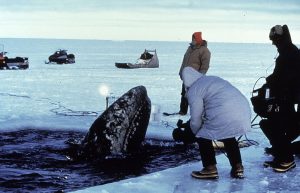
Whaling
As mentioned before, gray whales were heavily hunted during the commercial whaling era. As a matter of fact, whaling of this species was so intense that many populations were wiped out along the European coast and parts of the American coast too.
The discovery of their breeding grounds in the 1800s spurred excessive killing of mothers and calves. The subsequent drop in population meant it was no longer commercially viable to keep hunting them. So, whalers left them alone and their numbers slowly recovered.
However, by the early 1900s again hunting resumed with even more intensity than before largely due to the invention of factory ships. These ships were built to hunt, capture and process whales in a matter of minutes. Even species as large as the Blue Whale could be processed aboard ship in under one hour.
Population again dropped sharply to under 2,000 individual gray whales.
It was only a 1946 international agreement to stop hunting them that saved them from imminent extinction. Since then, their numbers have grown steadily.
Captivity
Due to their size and migratory habits, these whales are not suited to captivity at all. But there have been attempts to keep them for display in the past. These attempts are:
1) Gigi: The first captive gray whale was captured and kept in 1965 but died just two months later from infection.
2) Gigi II: The second captive gray whale actually survived for one year but became too big for the facilities and was released in 1972.
3) J.J. : This female gray whale beached in Marina del Rey, California. After discovery, she was rushed to SeaWorld San Diego and released 14 months later after growing too large for the facilities.
Whalers were able to locate the Gray Whale breeding grounds towards the late 1800s. This led to widespread slaughter of mothers and calves and a sharp drop in overall population.
8) Reproduction Details
Both male and female gray whales reach sexual maturity at about eight years old. Females are in oestrus in late November/early December every year and they will typically mate with multiple males during breeding season.
Female gray whales typically have just one calf every two years after a gestation period of just over one year. Calves come out tail first and measures approximately 4 meters (13 feet) in length. Thereafter, females nurse their young for seven months before weaning them.
Female gray whales give birth in shallow lagoon waters and experts believe this is done to protect their young from killer whales (orcas) and sharks.
9) Diet/Hunting Pattern Of The Gray Whale
Of course, gray whales are filter filters just like other baleen whales. In addition, this whale feeds mainly on benthic (sea or ocean floor dwelling) crustaceans. Because it has a peculiar habit of catching prey by turning on its right side, most older gray whales are blind in the right eye. This blindness is caused by sand and other sediments that pierce its eye while scooping up the crustaceans.
Also, its unique feeding habit makes the gray whale reliant on coastal water feeding as compared to other baleen whales.
A large proportion of adult Gray Whales are blind in their right eye because of their peculiar feeding habits on the ocean floor.
10) Alternative Names
- Grey Whale
- Gray Back Whale
- Pacific Gray Whale
- California Gray Whale
- Desert whale
- Devilfish
- Mussel digger
- Rip Sack
11) Population And Conservation Status
Unlike in past eras where gray whales were hunted almost to extinction, these whales are now protected from commercial hunting by the IWC since 1949. Therefore, they are no longer hunted on a large/commercial scale.
Their numbers are now about 26,000 individuals.
However, limited hunting is allowed especially in the Chukotka region (Northeastern Russia). A large population of gray whales spend their summer months there. This hunting is part of a permitted “aboriginal/subsistence whaling” exception to the overall commercial-hunting ban.
This issue still remains a controversial one with anti-whaling groups protesting it while Russia insists that it will continue. Gray whale meat is also often seen for sale in Japanese markets and supermarkets as well.
Meanwhile, gray whales still face other threats including:
- Pollution from oil and gas development (in the waters off Russia’s Sakhalin Island).
- Entanglement in fishing gear and ghosts nets.
- Collisions with ships.
- Entrapment in ice floes.
- Increased human activity in their breeding grounds.
- Marine noise and sonar interference.
The IUCN lists the Gray Whale as Least Concern.
Be that as it may, specific subpopulations like those in the northwest Pacific are regarded as Critically Endangered and the northwest Pacific population as Endangered by the U.S. National Marine Fisheries Service (the NOAA).
12) Ancestry And History
The scientific name Eschrichtius Robustus is partly in honor of physician and zoologist Daniel Frederik Eschricht.
The gray whale is the only surviving species in the genus Eschrichtius and the family Eschrichtiidae. They descended from filter-feeding ancestors dating back to the Oligocene Period (30 million years ago).
DNA analyses suggest that its closest relatives include some members of the family Balaenopteridae like the Humpback whale (Megaptera Novaeangliae) and the Fin whale (Balaenoptera Physalus).
13) Distribution and Habitat
The natural habitat of the gray whale includes parts of the eastern North Pacific (North America) and the western North Pacific (Asia) population.
Specifically, western gray whales migrate for summer feeding near Sahkalin Island (Russia) in May/June and return for winter feeding in the South China Sea by late autumn. The eastern group feed during summer in the Bering and Chukchi Seas (between Alaska and Russia) then move south along the west coast from USA to Mexico to breed and give birth.
Regrettably, they are now extinct in historic territories like the North Atlantic, and along the European coast. This is most likely due to excessive hunting.
There are other very rare and recent sightings around Israel and Namibia.

